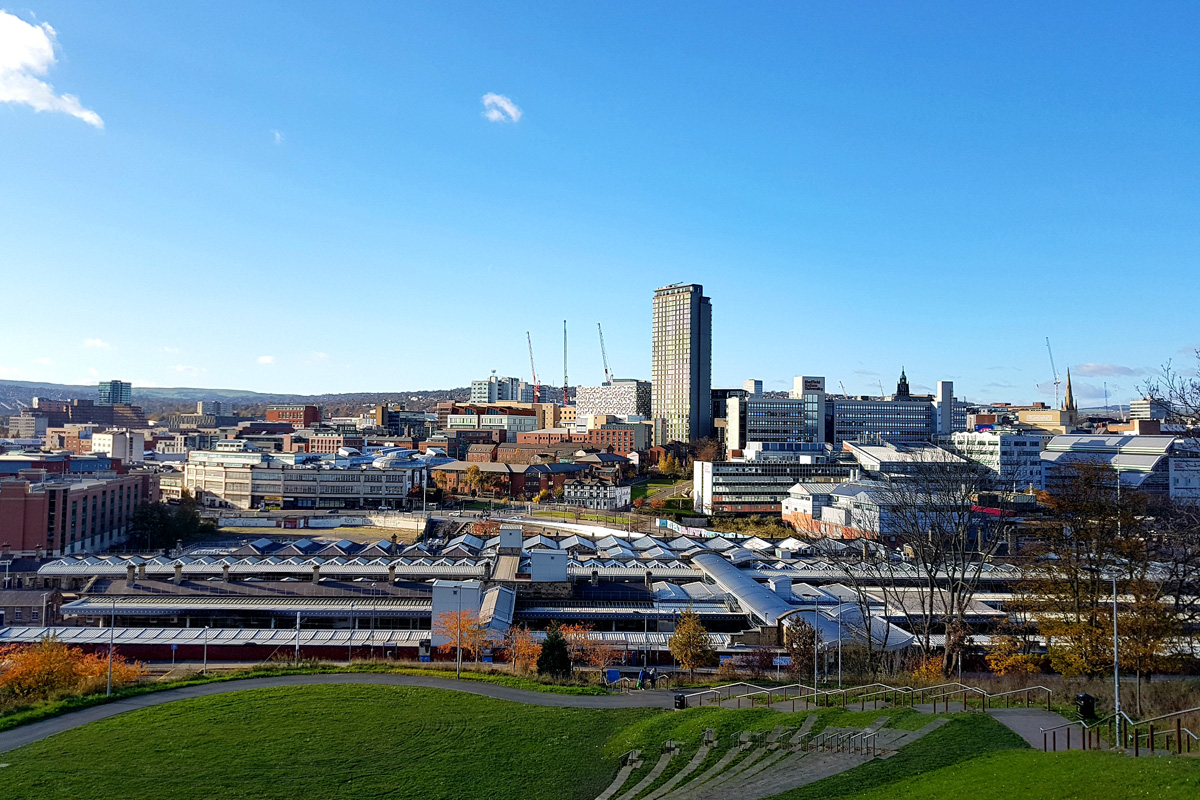- UK /
- Sheffield
Discover The Latest Property Statistics and Sold House Prices In Sheffield, South Yorkshire.
Gain a competitive edge in the Sheffield, South Yorkshire housing market using our extensive data on house prices with local insights and trends.

SHEFFIELD
Property market data for Sheffield in South Yorkshire. Compare data on the district postcode areas of Sheffield including sold house price growth, long let gross rental yield, buyer demand, average asking price, average price per square foot and average rental prices. Explore Sheffield with a range of tools to help you understand the local market.
In the centre of Sheffield, S1 long-let gross yield is 6.1%, the average rental price is £177 the average asking price is £151,955 and the average price per square foot is £241. There are currently N/A completed property sales per month, with a turnover of 6.0%. Toggle between postcode districts to see how different areas compare.
BUY-TO-LET PROPERTY INVESTMENT IN SHEFFIELD
Understanding the Housing Market in Sheffield: Key Facts and Figures
Located in the eastern foothills of the Pennines and historically part of the West Riding of Yorkshire, Sheffield lies 29 miles south of Leeds, 32 miles east of Manchester and 33 miles north of Nottingham. It is the largest conurbation of South Yorkshire, one of the Core Cities of the UK and an important centre for global business and industry, going back to the industrial revolution. It is most well-known for its specialisms in steel-making and metallurgy, a reputation that goes back to the 14th Century, and whilst these industries no longer make up the same portion of economic output in quite the way they once did, they very much persist within the cultural and architectural landscape. The Crucible, one of the most important venues, is a theatre but also home to the World Snooker Championships since 1977, gets its name from the crucible technique, which was developed locally in 1740 and revolutionised steel production. Sheffield fits easily into the top ten cities of the UK. And while it is no longer one of the primary world cities for steel production, it is still at the forefront of the country's advanced manufacturing industry, home to the Advanced Manufacturing Research Centre (AMRC) and the Advanced Manufacturing Innovation District (AMID) and producing more steel now, than ever before. But it is also known as the Outdoor City and as a destination for people who want a lifestyle associated with a big city, combined with rural escapes. With easy access to the Pennines, It is famous as a place that attracts those enthusiasts of outdoor pursuits. The villages of Hathersage and Edale are almost on the doorstep. 61% of the city is green space, with a third of the city district falling within the Peak District national park. Sheffield boasts 250 parks and public gardens in the city and is home to an estimated 4.5 million trees. It is a major university city, with the University of Sheffield and Sheffield Hallam University attracting around 60,000 students each year. This, of course, contributes to the youthful dynamism and creative culture that is so apparent. But students are only part of the picture. Sheffield has an energy that is entirely un-reliant on external forces. Musically, it is the city that brought you The Human League, Pulp, Moloko and Cabaret Voltaire. It is a driving force to UK culture and a City of Makers, home of award-winning theatre, high-end contemporary art, music of all genres, festivals, craft beers, and thousands of makers and artists across the city, who are supported by Sheffield City Council to the tune of £2.4m per year (2017/18 numbers), in-part through the Sheffield Culture Consortium. It is home to the Millennium Gallery, the Kelham Island Museum, the Weston Park Museum, the Abbeydale Industrial Hamlet and the Graves Gallery, to name only a few of the many important cultural institutions. According to a report from Halifax, Sheffield has recently seen the highest house price growth in the UK, with an 18% Increase in the average property price, from £192,090 to £228,353, seen between January and September 2022. This number is double the UK's average growth over the same period. Whilst part of the explanation for such an explosive number can be found in demand-side pressure that came from a popular return to the cities after a Covid-inspired trend to move away from urban areas, the demand for housing in Sheffield and the effect it has had on prices, stands out, when compared to the national picture. Sheffield is a dynamic and youthful city, a cultural centre of the north and an industrial powerhouse. Like all large cities, it has a range of available housing styles and price brackets. But it should be noted that efforts to increase the housing stock are not keeping pace with demand.